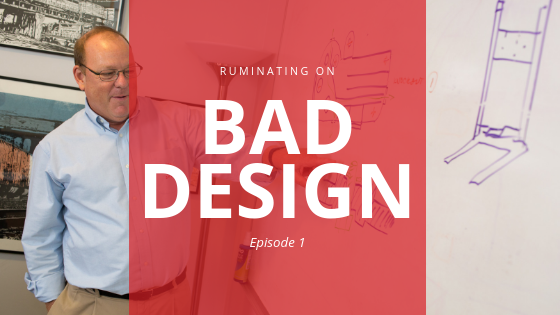Aesthetic design, industrial design, and human factors — broadly referred to as human-centered design these days — are all to be considered in making a product viable and practical. An obvious convergence of these three considerations: automobiles.
Automobiles, by their nature, must be highly engineered and we as humans have to interact intimately with them for control, safety, and comfort.
Some of the best designers in the world work on cars. And yet, the desire for strong aesthetics can bulldoze the importance of user-centric design.
Let’s observe the lowly air vent. Its key function in a modern car with air conditioning is to keep you cool. Modern cars often have massive windshields that can create tremendous heat loads, so you can deduce that cool air should be directed upward (because cool air sinks), and at the upper body and face. Makes perfect sense, right?
Perhaps not.
Exhibit 1 – Cadillac CTS
In an effort to move away from the stigma of being the senior’s top choice, Cadillac really focused on their edgy styling in the late 2000’s. So when I had the chance to rent one for a road trip to the Medical Device and Manufacturing trade show in Philly back in the day, I thought to myself, “this is going to be cool.”
Except the only thing that was cool were my hands. Actually cold. The primary vents were perfectly positioned to freeze your hands when at 10 & 2 or 3 & 9. It was darn near impossible to get air directed to your head and torso without the feeling of frosty fingertips.
Is this a case of sacrificing function for form? Was it totally overlooked by the world’s top designers? Was it intentional? Was it unavoidable?
Even if I loved the rest of the car, I’d never own it. This simple flaw was just too fundamental, and frankly inconsiderate, for me to tolerate.
My personal opinion: I have to believe that somebody realized this flaw existed. The desire for a bold aesthetic was apparently more important than a practical cooling mechanism at the end of the day. This must’ve passed scrutiny at hundreds of checkpoints along the way.
Exhibit 2 – Acura RSX
This model was really just a Honda Civic under the skin, but from the driver’s vantage, all controls were elegantly simple. Look at those vents, people. Twist ‘em, spin ‘em, maneuver ‘em! The steering wheel was small, comfortable, and placed your hands where they belong. The vents cooled me, not just my hands—unless I wanted them to.
Perhaps you’d consider the interior a little simple, or even cheap. But from a driver’s standpoint, they nailed it.
Take notes, everyone. Simplicity should be allowed to prevail over complexity unless there is a very compelling reason otherwise. We are living in an era of aesthetically-driven design. I guess it depends on your values, but SPARK believes a product should function perfectly before a form can truly take shape.
We can’t stress this enough: If you want your end-user to be happy, you must be able to think practically and personally about the designs you put into place.





